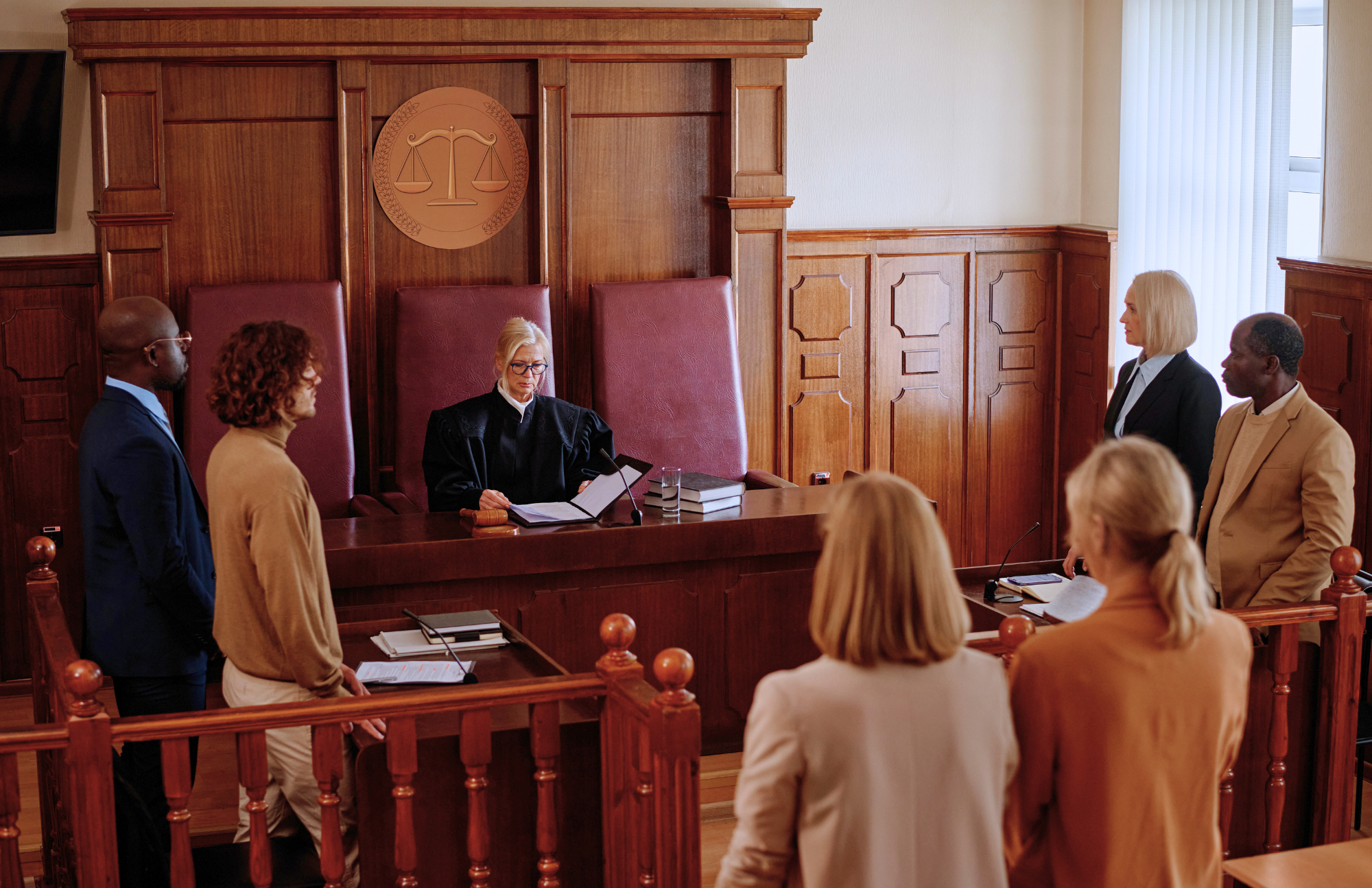
Navigating the legal system can be daunting, especially when facing a court appearance. One crucial aspect often overlooked is courtroom attire. Dressing appropriately for court is not just about following a dress code; it’s about showing respect for the legal process.
Your choice of clothing can influence how judges and jurors perceive you. It can impact the outcome of your case. Wearing the right outfit can boost your confidence and help you focus on the proceedings.
Understanding what to wear to court is essential for making a positive impression. This guide will help you choose the right attire for your court appearance. From colors to styles, we’ll cover everything you need to know.
Courtroom attire goes beyond fashion; it conveys respect and seriousness towards the legal process. Dressing appropriately can positively influence how you are perceived by those involved in the case.
The courtroom is a place of authority, demanding respect and decorum. What you wear reflects your understanding of these expectations and can impact your case’s credibility. Being mindful of courtroom attire ensures you present yourself in the best light possible.
Appropriate court attire also helps reduce distractions. It allows everyone, including judges and jurors, to focus on the details of your case rather than your outfit. Your clothing choice can affect their perception of your integrity and seriousness.
Consider these reasons for why courtroom attire matters:
The legal dress code varies by jurisdiction, yet common principles remain. These guidelines help maintain courtroom respect and seriousness. Dressing appropriately demonstrates your awareness and respect for the judicial process.
Recognizing the significance of conservative attire is crucial. It aims to convey professionalism and focus. Key elements of the legal dress code emphasize modesty, neatness, and simplicity. Your appearance should never distract from your case details.
When in doubt about what is acceptable, refer to the standard court attire checklist:
Failure to adhere to these can unintentionally send the wrong message. Always aim to meet or exceed the expected standards of courtroom decorum. Embracing these guidelines can bolster your case’s perceived credibility and sincerity.
Color choice plays a vital role in courtroom attire. Neutral tones convey respect and professionalism. They prevent drawing unnecessary attention away from the case.
Colors such as navy, gray, and black are safe choices. They carry connotations of seriousness and reliability. These colors foster a sense of calm and poise in a legal setting. Avoiding bright colors and overly bold patterns is wise. Such choices can appear distracting or too casual for a formal atmosphere.
Here is a quick list of suggested colors:
Men attending court should prioritize conservative and professional attire. Choosing the right outfit conveys respect for the court. It sets the tone for the proceedings.
A suit is the most suitable option for a court appearance. Pair it with a collared shirt and a tie. This combination embodies professionalism and seriousness.
Here are some key elements to consider for men’s court attire:
Ensure that your clothing is clean and pressed. Neat attire demonstrates attention to detail. It also helps you project confidence.
Women attending court should focus on understated elegance. Dress choices should reflect professionalism. Avoid clothing that’s too casual or provocative.
A suit, dress, or a skirt and blouse are ideal. These outfits convey seriousness and respect for the legal process. Neutral and modest options are best.
Consider the following guidelines for women’s court attire:
Clothing should always be clean and wrinkle-free. This helps maintain a professional image in court. Avoid flashy jewelry or accessories.
In court, attire sends a strong message. Dressing improperly could mislead or distract from your case. It’s crucial to avoid clothing that doesn’t communicate respect.
Refrain from wearing casual or overly trendy clothing. Court is not a place for the latest fashion statements. Instead, opt for more traditional styles that reflect professionalism.
Here’s a list of things to avoid in the courtroom:
Grooming plays a crucial role in complementing your court attire. A clean and tidy appearance reflects respect and seriousness. Ensure your hair is neatly styled and facial hair is well-groomed.
When it comes to accessories, subtlety is key. Excessive jewelry or large accessories can be distracting. Choose classic pieces that don’t make noise or draw unnecessary attention.
Consider the following tips for personal presentation:
Making a good impression in court goes beyond clothing. Your demeanor plays a crucial role too. Stand confidently, speak clearly, and respect all court personnel.
Additionally, ensure punctuality. Arriving early shows respect for the court’s time. This also gives you a moment to gather your thoughts and calm any nerves.
Keep these final tips in mind:
Your presentation in court reflects your seriousness about the proceedings. This attention to detail can positively influence perceptions, reinforcing your commitment to the legal process.
What should I wear if I have a limited wardrobe?
Aim for clean and neat clothes. Opt for simple, muted colors and avoid anything too casual.
Is it acceptable to wear jeans in court?
Generally, jeans are considered too casual. Choose dress pants or slacks instead to maintain professionalism.
How can I handle unexpected weather changes?
Layer your outfit. You can bring a sweater or jacket for comfort without losing your polished look.
What is the biggest mistake people make regarding courtroom attire?
The most common error is being too casual. Avoid sneakers, t-shirts, and flashy jewelry to ensure you present yourself appropriately.
Remember, your goal is to make a respectful and positive impression. Appropriately chosen attire plays a significant role in achieving this objective.
Dressing well for court is not just about appearance, it’s about respect and professionalism. Understanding and following courtroom attire guidelines can significantly impact the outcome of your case.
Choose clothes that reflect your seriousness and commitment to the legal process. By dressing appropriately, you not only show respect for the court but also build confidence in yourself and in the perception of others. Prepare in advance, and walk into the courtroom with assurance.